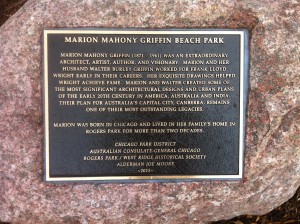From a record 51 entries, the jury awarded 35 Awards and Commendations at the 2014 ACT Architecture Awards on Saturday 14 June at the recently refurbished REX Hotel.
For the second year in a row, Tonkin Zulaikha Greer’s (TZG) National Arboretum has been honoured at the ACT Awards. Following on from the 2013 Romaldo Giurgola Award for Public Architecture for the Village Centre, TZG along with Taylor Cullity Lethlean have taken out the 2014 Sir John Overall Award for Urban Design and the chapter’s highest accolade, the Canberra Medallion.
‘The National Arboretum has transformed a devastated site into a major education, research and recreation venue for the National Capital. The seamlessly collaborative architecture and landscape teams have established a significant green heart for Canberra.
‘An important local initiative with national and international benefits already evident, it is a most worthy recipient of the 2014 Canberra Medallion,’ the jury said.
Apostolic Nunciature 1976–1977 by past Gold Medallist Enrico Taglietti received the Award for Enduring Architecture. Built to accommodate diplomatic representatives of the Holy See, the Apostolic Nunciature received several RAIA (ACT) merit awards soon after its completion and Mr Taglietti was awarded a Papal Knighthood of St Gregory the Great in recognition of his design.
‘The 2014 Award for Enduring Architecture acknowledges the way the building has served its purpose well and has been cared for in a loving manner. The architect deserves credit for the strength and appropriateness of his high quality original design,’ the jury noted.
Other notable winners on the night include Australian National University Australian Centre on China in the World by Munns Sly Moore in association with Mo Atelier Szeto which took home the Romaldo Giurgola Award for Public Architecture, Art in Architecture Prize and an INLITE Light in Architecture Prize – Commendation. Hotel Hotel by March Studio also received multiple recognitions with the W Hayward Morris Award for Interior Architecture and an Art in Architecture Prize.
The top residential prize, the Malcolm Moir and Heather Sutherland Award for Residential Architecture – Houses (New), was presented to Rodney Moss in association with Ken Murtagh and Pip Smith for The Mook.
‘The Mook is highly detailed and beautifully crafted and a successful essay in the provision of flexible housing choice that has been delivered in a delightful and bespoke pavilion,’ reflected the jury.
Projects that received a Named Award or an Architecture Award now progress to the 2014 National Architecture Awards to be announced in Darwin on 6 November.
Full list of winning projects by category (alphabetical):
Art in Architecture Prize
Winner – Hotel Hotel by March Studio
Winner – Australian National University Australian Centre on China in the World by Munns Sly Moore Architects in Association with Mo Atelier Szeto
BCA Certifiers Mervyn Willoughby-Thomas Renovation Award
Winner – Loft of Suburbia by Yuri Leong, ylarchitecture
Canberra Medallion
Winner – National Arboretum Canberra by Tonkin Zulaikha Greer and Taylor Cullity Lethlean
COLORBOND® Award for Steel Architecture
Award – The Mook by Rodney Moss in association with Ken Murtagh and Pip Smith
Commendation – Radford College–Radford Senior School by Cox Architecture
Commercial Architecture
John Andrews Award for Commercial Architecture – Canberra Centre Food Court by Cox Architecture
Education Prize
Winner – Taylor Primary School by Small Quinton Coleman Architects
Enduring Architecture
Award – Apostolic Nunciature 1976 – 1977 by Enrico Taglietti
Heritage Architecture
J S Murdoch Award for Heritage – Gudgenby-in-a-Box by Philip Leeson Architects
Commendation – NFSA Theatrette by Cox Architecture
INLITE Light in Architecture Prize
Winner – Embassy of the Kingdom of the Netherlands by Philip Leeson Architects
Commendation – No.36 Stage 2 by Townsend + Associates Architects
Commendation – Australian National University Australian Centre on China in the World by Munns Sly Moore Architects in Association with Mo Atelier Szeto
Interior Architecture
W Hayward Morris Award for Interior Architecture – Hotel Hotel by March Studio
Award – National Museum of Australia – Additions by ARM Architecture
Commendation – Virgin Australia Canberra Lounge by Tonkin Zulaikha Greer
Commendation – Radford College–Radford Senior School by Cox Architecture
Public Architecture
Romaldo Giurgola Award for Public Architecture – Australian National University Australian Centre on China in the World by Munns Sly Moore Architects in Association with Mo Atelier Szeto
Award – Canberra International Airport by Guida Moseley Brown Architects
Award – National Museum of Australia – Additions by ARM Architecture
Award – Radford College–Radford Senior School by Cox Architecture
Award – Colleges of Science – Chemistry Sciences Building by Lyons
Commendation – John Paul College by Collins Caddaye Architects
Commendation – Embassy of the Kingdom of the Netherlands by Philip Leeson Architects
Residential Architecture – Houses (Alterations and Additions)
Award – No.36 Stage 2 by Townsend + Associates Architects
Commendation – Narrabundah House + Studio by Jigsaw Housing
Residential Architecture – Houses (New)
Malcolm Moir and Heather Sutherland Award for Residential Architecture – Houses (New) – The Mook by Rodney Moss in association with Ken Murtagh and Pip Smith
Award – Phillips Pavilion by Arquitectura
Award – Narrabundah House by Adam Dettrick Architects
Small Project Architecture
ACT Chapter Award for Small Project Architecture – The National Workers Memorial by Johnson Pilton Walker
Commendation – Mirning Bathroom by Roger Pegrum
Sustainable Architecture
ACT Chapter Award for Sustainable Architecture – John Paul College by Collins Caddaye Architects
Urban Design
Sir John Overall Award for Urban Design – National Arboretum Canberra by Tonkin Zulaikha Greer and Taylor Cullity Lethlean
Commendation – Colleges of Science by Lyons
Additional Prizes
2014 President’s Medal – Janet Thomson
2014 Clem Cummings Medal ¬– Robert Purdon and Christine Purdon
Emerging Architect Prize – Rob Henry
ACT Chapter Student Medallion – Melanie Schonfeld and Cassandra Cutler
John Redmond Prize – Stewart Youngblutt
Daryl Jackson Alastair Swayn Graduate Prize – Mark Power and Kate Shepherd
Cox Architecture Student Design Prize Winner – Megaform by Kate Shepherd
Cox Architecture Student Design Second Prize – Conference Centre by Cassandra Cutler
Cox Architecture Student Design Third Prize – Shine Dome Inverted Cadence by Will Headland

